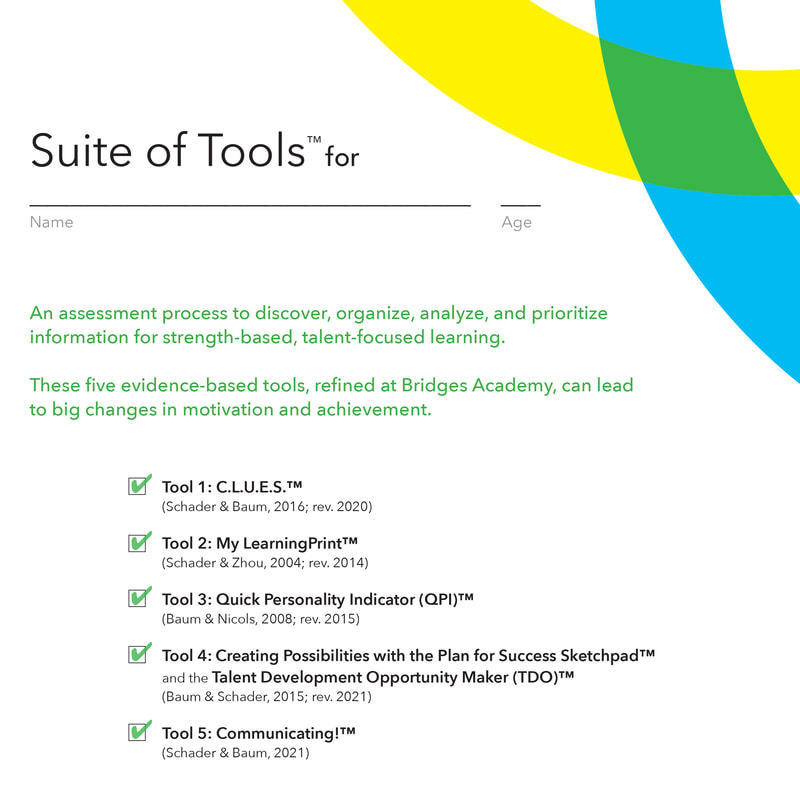Learner Profiles and Differentiation
Purpose
|
The diverse learning profiles of our students require a higher level of differentiation in scheduling, program, and curriculum than typically found in most schools. Differentiation and dual differentiation are vital tools to facilitate students’ participation in learning activities and their ability to produce meaningful and independent work.
The Whole LearnerWe learn about our students in many ways. In working closely with students day to day in project- and problem-based learning, observing them at play, and having conversations at lunch, we can enter their world. We gain additional perspectives by conferencing with other teachers and with parents. The multiple perspectives model provides an outline of the many areas we explore together with our students.
We utilize the Suite of Tools™ with My LearningPrint™ to provide additional insights and opportunities for teachers, parents, counselors, and students to discover ways to learn optimally and collaborate using a strength-based, talent-focused approach. |
Strength-Based, Talent-Focused Pedagogy
Armed with understanding of a student's abilities, interests, experiences, areas of curiosity, personality, and learning preferences, Teachers have four distinct methods of applying the information within the curriculum:
- Engaging Through Strengths
- Leveraging Strengths
- Dual Differentiation
- Enrichment and Talent Development Opportunities
Differentiation & Dual Differentiation
Highly capable students with learning challenges often need differentiated programs and activities. Utilizing elements of Tomlinson’s differentiation framework, Universal Design for Learning, learner profiles, and a deep understanding of readiness, teachers can design curriculum and activities that motivate, engage, and increase learning. Designers can differentiate the content, processes, environments, products, and assessments. Differentiation occurs in the initial design and can be ongoing throughout activities in response to needs as they may arise. Some differentiation techniques are referred to as “Dual-differentiation” when students’ areas of particular learning goal, ability, or subject strength collide directly with specific learning challenges. Greater information and consideration for design and response are warranted. We differentiate to maximize the learning potential and to minimize the impact of challenges that get in the way.
Impact

Research has shown that increasing engagement through strengths, interests, and talent development results in dramatic growth in twice-exceptional students’ self-regulation, perceptions of ability, and academic achievement. Talent development also allows these students to find their individual niches so that they can have a productive and rich life.



